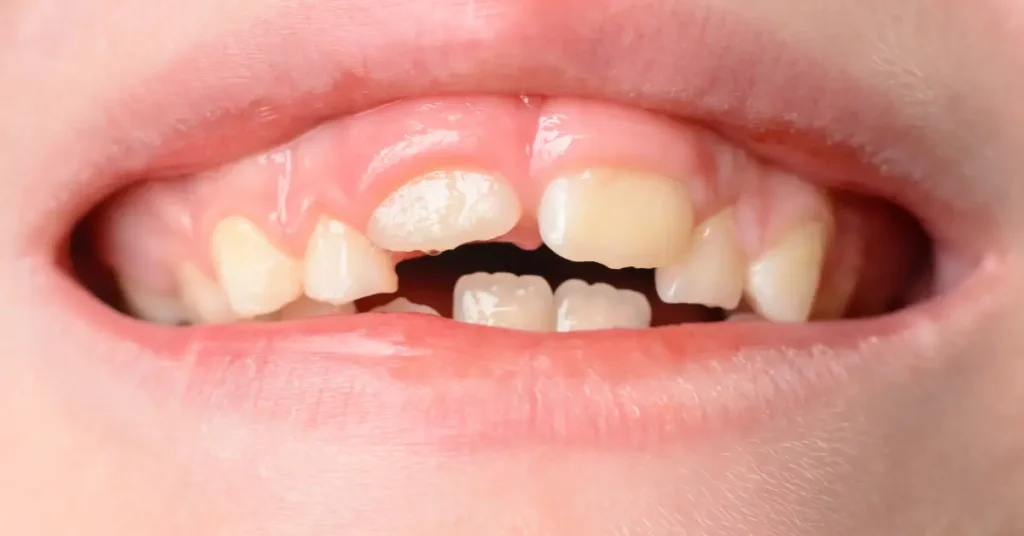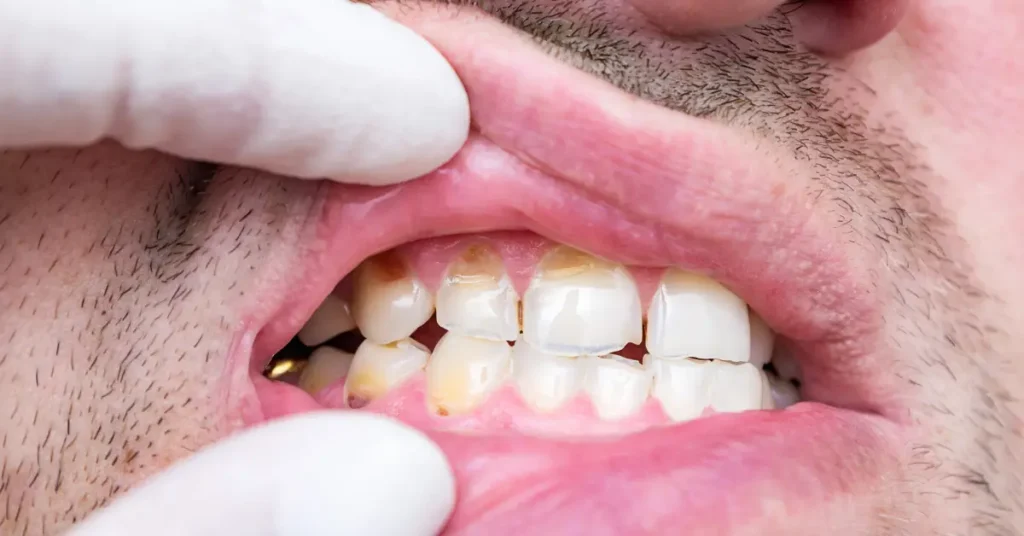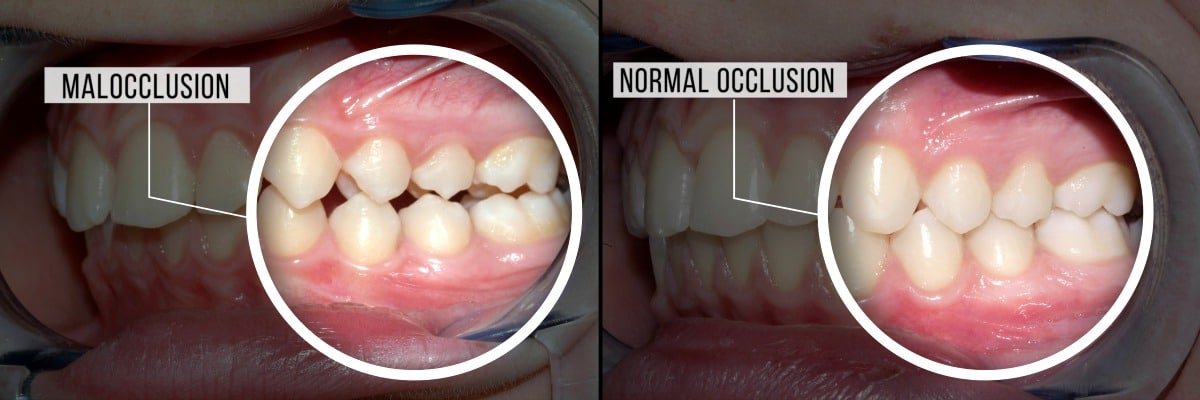Malocclusion of the teeth refers to the misalignment of the upper and lower teeth, which can lead to various dental issues. It can be treated through orthodontic interventions such as braces or clear aligners, and in severe cases, surgical correction may be necessary.
This condition affects both children and adults, causing problems with chewing, speech, and self-esteem. The goal of treatment is to improve the bite, align the teeth properly, and enhance overall dental health. By addressing malocclusion, individuals can achieve a functional and aesthetically pleasing smile, as well as reduce the risk of dental complications such as tooth decay and gum disease.
What is Malocclusion of the Teeth and How Can it be Treated?-What Is Malocclusion And Why Does It Occur?

Malocclusion of the Teeth refers to the misalignment of the teeth, resulting in an imperfect bite. This dental condition can affect both children and adults, leading to various dental problems. Understanding the causes of Malocclusion of the Teeth is crucial in addressing and treating this condition effectively.
Definition And Explanation Of Malocclusion
Malocclusion of the teeth is a dental term that describes the improper positioning of the teeth when the jaws are closed. It can manifest in various forms, such as overbite, underbite, crossbite, or overcrowding. These malalignments can affect the appearance of your smile, as well as the functionality of your teeth and jaw. It is important to note that malocclusion can be hereditary or acquired over time due to various factors.
Common Causes Of Malocclusion
There are several common causes of malocclusion, including:
- Genetics: In many cases, Malocclusion of the Teeth is inherited from parents who also have dental misalignments. The size and shape of the jaw, teeth, and bones can be influenced by genetics, affecting how they fit together.
- Thumb sucking and pacifier use: Prolonged thumb sucking or the use of pacifiers beyond a certain age can lead to malocclusion. These habits can affect the proper growth and alignment of the teeth and jaw.
- Tongue thrusting: Habitual tongue thrusting, where the tongue pushes against the front teeth instead of resting at the roof of the mouth, can cause the teeth to shift out of alignment, leading to malocclusion.
- Poor oral habits: Poor oral habits such as teeth grinding, nail-biting, or chewing on objects can also contribute to misalignments of the teeth and jaws.
- Early loss of primary teeth: Premature loss of baby teeth can disrupt the normal development of permanent teeth, leading to malocclusion.
How Malocclusion Can Impact Oral Health
Malocclusion can have a significant impact on oral health. It can cause a range of issues, including:
- Tooth decay and gum disease: Misaligned teeth can make it difficult to brush and floss effectively, leading to an increased risk of tooth decay and gum disease.
- Temporomandibular Joint Disorder (TMJD): Malocclusion can put a strain on the jaw joint, leading to TMJD, which can cause jaw pain, headaches, and difficulty in opening and closing the mouth.
- Speech difficulties: Severe malocclusion can affect speech by interfering with the proper movement of the tongue and lips.
- Chewing and digestion problems: Misaligned teeth can make it challenging to chew food thoroughly, leading to digestion issues and potential nutrient deficiencies.
- Self-esteem and confidence: Malocclusion can affect the aesthetic appearance of the smile, potentially impacting an individual’s self-esteem and confidence.

Credit: carrumdownsdental.com.au
Malocclusion of the Teeth -Types Of Malocclusion
Malocclusion of the teeth refers to a misalignment between the upper and lower jaws. There are different types of malocclusion, such as overbite, underbite, and crossbite. Treatment options include braces, clear aligners, and jaw surgery, depending on the severity of the condition.
An important aspect of dental health that often goes unnoticed is malocclusion of the teeth, which refers to the misalignment or incorrect positioning of the teeth when the jaws are closed. This condition can lead to various dental issues and affect both the overall appearance and functionality of the mouth. Understanding the different types of malocclusion is essential in order to identify and address any potential problems. In this article, we will delve into three common types of malocclusion: overbite, underbite, and crossbite. Let’s explore each of these conditions, including their explanations, causes, and consequences, as well as the available treatment options.
Overbite
An overbite, also known as a deep bite, occurs when the upper front teeth overlap significantly with the lower front teeth. This type of malocclusion is the most common and can be easily identified.
Explanation of an overbite
An overbite is caused by a discrepancy in the vertical alignment of the teeth and jaws. It means that the upper teeth overlap the lower teeth excessively when biting down.
Causes and consequences of an overbite
The causes of an overbite can vary, including genetics, thumb sucking, tongue thrusting, and improper oral habits. The consequences of an overbite can range from aesthetic concerns, such as an unbalanced smile, to functional issues like difficulty in chewing, speaking, or even breathing properly.
Treatment options for an overbite
Thankfully, there are several treatment options available to correct an overbite. These include braces, aligners, and functional appliances. In some cases, orthodontic surgery may be necessary to reposition the jaws. The specific treatment plan will depend on the severity of the overbite and the individual needs of the patient.
Underbite
Explanation of an underbite
Causes and consequences of an underbite
Underbites can be caused by a combination of genetic factors and developmental issues. Some of the consequences of an underbite can include difficulty in chewing, speaking, and maintaining proper oral hygiene. It can also cause facial asymmetry and jaw pain.
Treatment options for an underbite
Treating an underbite typically involves a combination of orthodontic techniques and jaw surgery. Orthodontic braces or clear aligners may be used to align the teeth, followed by surgical interventions to correct the positioning of the jaws. Early intervention is crucial for the successful treatment of an underbite.
Crossbite
Explanation of a crossbite
Causes and consequences of a crossbite
Crossbites can be caused by genetic factors, delayed tooth eruption, or habits like thumb-sucking. If left untreated, a crossbite can lead to functional problems like difficulty in biting and chewing, as well as an increased risk of tooth wear and jaw misalignment.
Treatment options for a crossbite
The treatment for a crossbite usually involves orthodontic intervention. Braces or clear aligners can be used to gradually shift the teeth into their proper positions. In some cases, a fixed or removable dental appliance may be used to correct the bite. Early detection and treatment can prevent long-term complications. In conclusion, malocclusion of the teeth encompasses various types, including overbite, underbite, and crossbite. Each type has its own explanation, causes, consequences, and treatment options. If you suspect that you or your child may have any of these malocclusions, it is important to consult with a qualified orthodontist who can recommend the most appropriate treatment plan. Addressing malocclusion at an early stage can lead to improved dental health, functionality, and aesthetics in the long run.
Treating Malocclusion

Malocclusion, or the misalignment of teeth, can lead to various dental problems and impact a person’s overall oral health. Fortunately, there are several effective treatment options available to correct malocclusion and restore a proper bite. The most common treatments include orthodontic treatment options, orthognathic surgery, and the use of orthodontic appliances. Let’s explore these options in detail.
Orthodontic Treatment Options
Braces
Braces are the most commonly used orthodontic treatment for correcting malocclusion. Traditional braces consist of brackets, wires, and bands that work together to gradually move the teeth into the correct position. These braces are made of high-quality materials to ensure durability and effectiveness.
The process of getting braces involves several steps. Firstly, the orthodontist will clean and dry your teeth. Then, they will apply a bonding agent to attach the brackets to the teeth. Once the brackets are in place, an archwire is inserted, which applies gentle pressure to move the teeth. Over time, the wires are adjusted to achieve optimal results.
The duration of braces treatment varies depending on the severity of malocclusion. On average, it takes about 1 to 3 years to complete the treatment. Regular visits to the orthodontist are required for adjustments and monitoring progress.
Advancements in Braces Technology
With advancements in dental technology, traditional braces have become more comfortable and aesthetically pleasing. Ceramic braces are an excellent alternative to metal braces as they blend in with the natural tooth color, making them less noticeable. Lingual braces are another option where the brackets are placed at the back of the teeth, providing a virtually invisible solution.
Self-ligating braces are gaining popularity due to their efficiency and reduced treatment time. These braces eliminate the need for elastic or metal ties, allowing for easier cleaning and maintenance. Additionally, clear aligners, such as Invisalign, have emerged as a popular choice among patients seeking a more discreet treatment option.
Invisalign
Explanation of Invisalign Treatment
Invisalign is a revolutionary orthodontic treatment that utilizes a series of clear, removable aligners to correct malocclusion. These aligners are custom-made for each patient and are virtually invisible when worn. Invisalign is a popular choice for adults and teenagers who desire a more discreet treatment option.
How Invisalign Works
The Invisalign treatment process starts with a consultation, where the orthodontist will assess your malocclusion and determine if you are a suitable candidate. If approved, a 3D digital scan or physical impressions will be taken to create a personalized treatment plan.
You will receive a series of aligners, each to be worn for about 1 to 2 weeks, gradually moving your teeth into the desired position. The aligners need to be worn for at least 22 hours a day for optimal results. Approximately every six weeks, you will visit your orthodontist to receive the next sets of aligners and for progress checks.
The treatment duration with Invisalign can vary depending on the complexity of the malocclusion. On average, it takes around 12 to 18 months to achieve the desired results.
Benefits and Limitations of Invisalign
Invisalign offers several benefits compared to traditional braces. Firstly, the aligners are removable, allowing you to enjoy your favorite foods without restrictions. They can be easily taken out for brushing and flossing, promoting better oral hygiene. Invisalign aligners are also more comfortable than traditional braces as they do not have any wires or brackets that may cause irritation.
However, it’s important to note that Invisalign may not be suitable for severe cases of malocclusion or certain dental conditions. Additionally, the success of Invisalign treatment relies on the patient’s compliance in wearing the aligners as instructed by the orthodontist.
Other Treatment Options For Malocclusion
Orthognathic Surgery
Orthognathic surgery, also known as corrective jaw surgery, is typically recommended for severe cases of malocclusion that cannot be corrected with orthodontic treatment alone. This surgical procedure involves repositioning the upper or lower jaw to improve the bite and facial harmony.
Conditions that may require orthognathic surgery include severe overbite or underbite, open bite, or asymmetrical facial features. The recovery period for orthognathic surgery can range from a few weeks to several months, depending on the complexity of the procedure. However, the long-term results can significantly improve both the function and aesthetics of the smile.
Orthodontic Appliances
Orthodontic appliances, such as space maintainers, palatal expanders, and headgear, may be recommended in certain cases of malocclusion. These appliances work in conjunction with braces or Invisalign to achieve optimal results.
Orthodontic appliances are designed based on the specific needs of each patient. They are used to correct issues like overcrowding, narrow palates, and jaw discrepancies. The orthodontist will determine the most suitable appliance and provide instructions on wearing and maintaining it for successful treatment.
The use of orthodontic appliances can vary in duration depending on the individual case. Regular appointments with the orthodontist will ensure proper adjustment and progress monitoring.
In conclusion, treating malocclusion requires a tailored approach to address each individual’s dental needs. Orthodontic options such as braces, Invisalign, orthognathic surgery, and orthodontic appliances offer effective solutions for correcting misaligned teeth and improving oral health. Consulting an experienced orthodontist is crucial in determining the best treatment option for achieving a beautiful and functional smile.
Conclusion
Malocclusion of the teeth is a common dental issue that can affect both the appearance and functionality of your smile. From overbites to crowded teeth, there are various types of malocclusion that require professional treatment. By seeking help from a qualified orthodontist, you can explore options such as braces or aligners to correct misalignment and achieve a healthier, more confident smile.
Remember, early detection and intervention can lead to better outcomes. Don’t hesitate to consult a dental professional if you suspect malocclusion in yourself or a loved one.

1 thought on “What is Malocclusion of the Teeth and How Can it be Treated?”